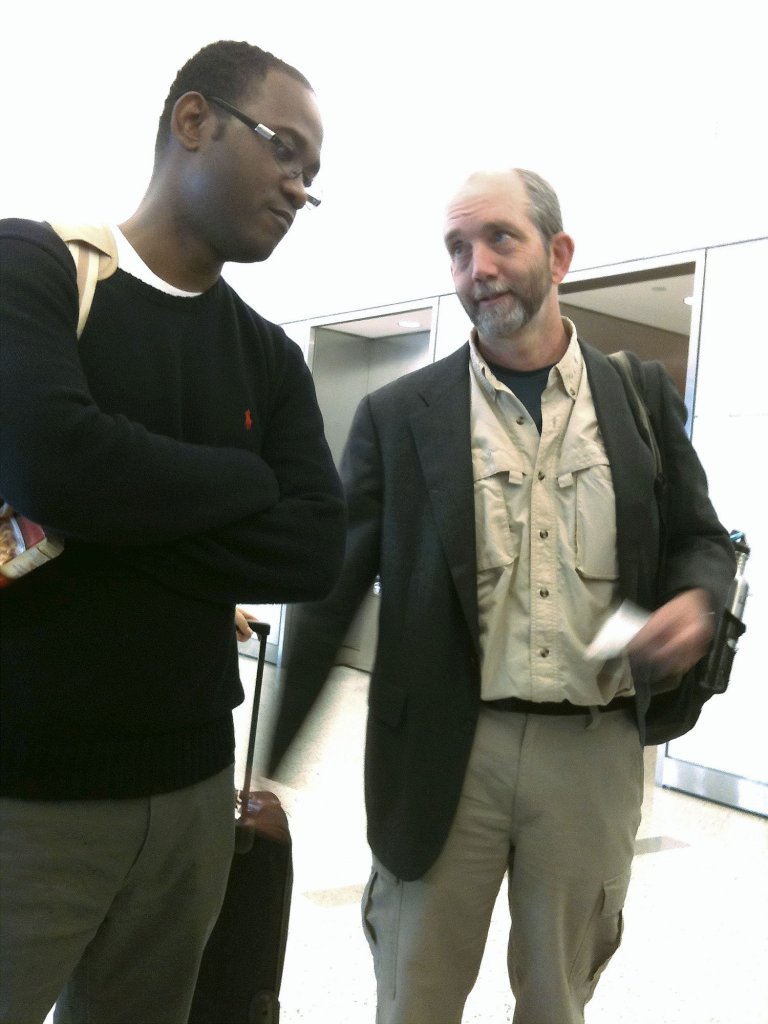SANTO DOMINGO, Dominican Republic – Nate Nickerson and the young doctor from Delaware confer while waiting for their bags at the city’s airport.
cThe doctor’s got a ride overland into Haiti to Port-au-Prince with a group of Jehovah’s Witnesses, and if Nickerson wants to head there with him, he can.
Nickerson shakes his head.
”I gotta get to Cap,” he says.
Cap-Haitien, Haiti’s second-largest city, is in the north of the country, well away from the epicenter of the earthquake that destroyed much of Port-au-Prince last week and killed untold thousands of people.
Reports are that Cap-Haitien is largely unscathed. But the medical facilities there – particularly the Justinian Hospital – are being called on to provide care for the injured who can be airlifted from Port-au-Prince.
And Nickerson is executive director of Konbit Sante, a Portland-based nonprofit that has worked for the past decade to build relationships with Haitian caregivers and strengthen the health system in Cap-Haitien. He’s traveling to the city to assess the needs firsthand, to help the public health system coordinate its demands with the outpouring of support, supplies and expertise from the United States.
Air flight into Haiti has become almost impossible. Instead, Nickerson has flown into the Dominican Republic, the other country that occupies the West Indies island of Hispaniola with Haiti. The plan is to try to secure tickets today for a bus that will travel all day, along the coast, to Cap-Haitien.
While numerous reports have the roads from Santo Domingo to Port-au-Prince clogged with aid workers, journalists, family members heading home and others, he hopes the route north to Cap will be open.
”One reason I really need to get in is information is really sketchy,” says Nickerson.
Sitting at Ruben’s Hotel in Santo Domingo, going over the 50 or so e-mails he has gotten since leaving Portland early Saturday, he gets conflicting reports of the situation in Cap-Haitien.
One says Cap needs help handling the increased medical demand. Another says no, medical staff from Cap should head down to Port-au-Prince to work directly at the disaster scene. Still another report has the United Nations wanting to set up Cap-Haitien as a primary medical center to deal with the earthquake’s aftermath.
Nickerson said medical staffers from Konbit Sante had wanted to head down to the epicenter. But as an administrator, he keeps coming back to several main points.
There are 7 million people who weren’t in the earthquake zone who will still need to get medical care.
The casualties are so great from the quake that the rest of the health care system will be in incredible demand.
And Haiti remains a Third World country. Even with all the support Konbit Sante has given the Cap-Haitien medical system, it’s still woefully lacking.
”Under the best of circumstances, they have no budget,” he says.
Konbit Sante isn’t a big relief organization. It has 2.3 full-time equivalent positions in Maine and supports 26 positions in Cap. But the nonprofit has relationships with various health groups in the city and the region, and with donors in the United States. Medical personnel don’t know where to go. Groups want to send resources, but they don’t know to where.
Nickerson hopes by working with Konbit Sante’s partners in the city, he can determine what the needs are, and where, and match them with the resources.
”I’ve got to work the Haiti end of it,” he says. ”It’s not sexy stuff – it’s basic stuff.”
But it’s that groundwork, those existing partnerships and connections, that can make response to a disaster like an earthquake more effective.
For example, a public health graduate student from Johns Hopkins University in Baltimore did a rotation through Konbit Sante in Cap-Haitien recently. When the earthquake struck, he reached out to Nickerson, connecting him with the school’s disaster relief efforts.
Now the school’s hospital is looking to send down people and supplies, possibly on a jet – and the hospital has coordinated it through Konbit Sante. Nickerson is already planning meetings for today with the director of the north region and United Nations officials.
Konbit Sante has coordinated teams of volunteers to help out in numerous ways in Cap-Haitien in the past. Electricians have upgraded parts of the infrastructure at the Justinian, putting in technology that maintains power in the operating suites, even during blackouts. Medical staff have come down. And staff from the hospital have been trained in the United States, too – from doctors to administrators.
It’s all part of helping the city build a health care system, inclusive of supply chain management, doctors, administrators and others.
Nickerson is a nurse practitioner. He’s a bit rusty, though if need be, he can help out medically. But if he can instead help coordinate efforts to get whole teams of doctors and nurses and supplies into Haiti – that’s a much greater impact than one man’s hands, he says.
Nickerson is worried about the state of Haiti. If enough resources aren’t dedicated to securing the country, all of Haiti would be affected. Disruptions in delivery of food, gas, medical supplies could seriously have an impact on Cap. It’s not just Port-au-Prince that would suffer.
Nickerson has been to Cap-Haitien roughly 35 times in the past. It’s often a two-day venture. But it’s rarely been this challenging.
”The only other time where we had difficulty getting into the country was after the government fell,” he recalls.
Send questions/comments to the editors.


